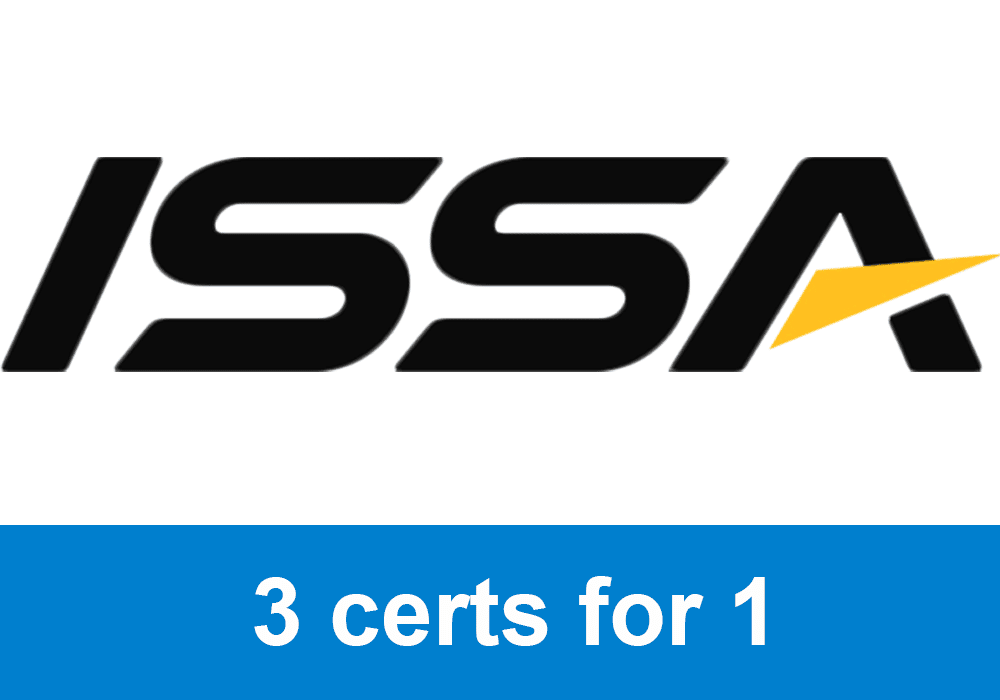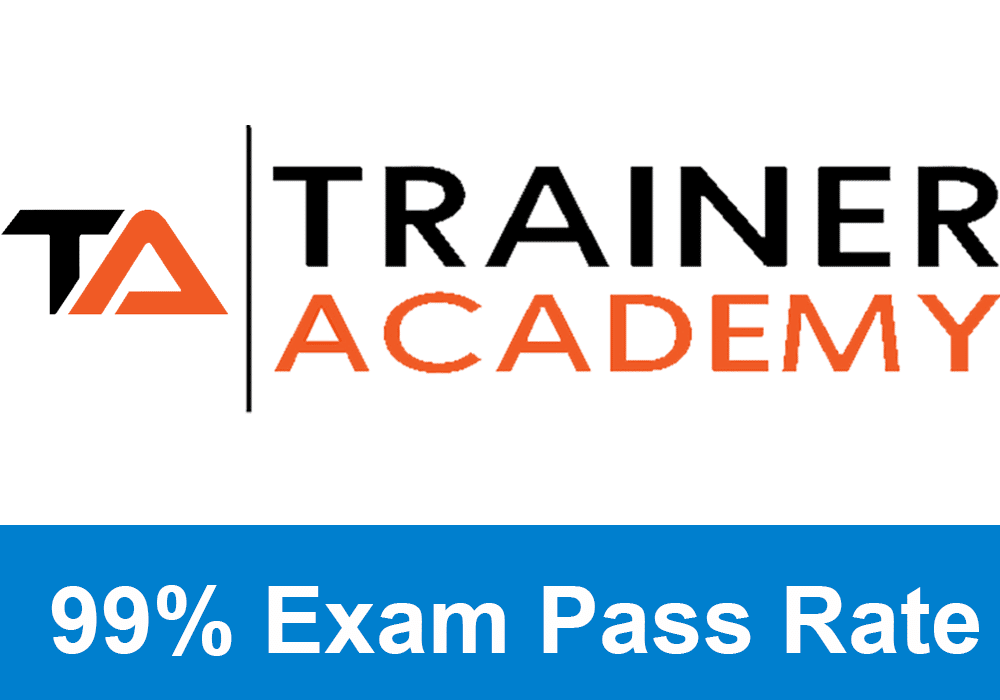![How to Conduct a Postural Assessment: A Guide ([year]) 4 GIF of Tyler Read opening NASM book and pointing to page on the static postural assessment](https://www.ptpioneer.com/wp-content/uploads/2024/08/Postural-Assessment-GIF.gif)
The postural assessment is a key tool used to assess a client’s standing posture for any movement or muscle dysfunctions. The method involves viewing your client’s standing position from multiple angles and comparing it to the correct anatomical position, neutral spine.
Posture is a fundamental aspect of human health, influencing everything from musculoskeletal function to mental well-being. Yet, poor posture is a common area of concern, leading to chronic pain, reduced mobility, and increased injury risk.
If you want to pass your personal training exam the first time, make sure to check out the cheat sheet from Trainer Academy.
As a personal trainer, mastering the art of postural assessment is critical not only for optimizing your clients’ training programs, but also for preventing potential injuries and enhancing overall performance, along with increasing their overall quality of life.
In this comprehensive guide, I explore the intricacies of postural assessments, including how to conduct them effectively, common postural deviations to look out for, and corrective exercises that can help restore optimal alignment. By the end of this article, you’ll be well-equipped to implement postural assessments into your practice, whether you’re preparing for a certification exam or looking to refine your skills.
I cover information from the postural assessments used by NASM, NSCA, ISSA, ACE and NCSF in their fitness certifications.
Key Points I Cover:
- The importance of postural assessments in personal training.
- Detailed steps on how to conduct a thorough postural assessment.
- Understanding common postural deviations and their implications.
- Best practices for integrating corrective exercises into your training programs.
- Tips for using postural assessments to enhance client outcomes and success rates.
The Importance of Postural Assessments in Personal Training
![How to Conduct a Postural Assessment: A Guide ([year]) 5 Tyler Read holds up a copy of the NASM CPT textbook looking at the page covering the static postural assessment](https://www.ptpioneer.com/wp-content/uploads/2024/08/Tyler-Read-with-the-NASM-static-postural-asessment-1024x682.jpg)
Postural assessments are foundational to effective personal training. They offer insight into the structural alignment of the body in different positions, helping trainers identify imbalances that could lead to injuries or impede performance.
Postural assessments are essential because they can identify muscle imbalances and dysfunction, they can enhance performance and prevent injury, and build a strong foundation to develop overall symmetry along with both muscular strength and physical conditioning.
Identifying Muscle Imbalances and Dysfunction
Muscle imbalances occur when one group of muscles is stronger or more dominant than another, leading to improper joint function and increased injury risk. For example, tight hip flexors paired with weak glutes can lead to an anterior pelvic tilt, placing undue stress on the lower back.
By conducting a postural assessment, you can identify every imbalance and design a training program that addresses all of them, ensuring that your client’s body is balanced and functioning optimally.
Enhancing Performance and Preventing Injury
Good posture is not just about looking confident—it’s purpose is to ensure that the body moves efficiently. Poor posture can affect movement patterns, leading to compensations that increase the risk of injury. For instance, a forward head posture can lead to neck pain and shoulder dysfunction, affecting upper body movements such as pressing or pulling.
Exclusive PTP CPT Offers |
||
|---|---|---|
Most Popular Cert | Best Online NCCA Cert | Best Study Materials |
Gold Standard Cert | A Good Option | Best CPT for you?  |
By correcting postural deviations, you can improve your clients’ performance in various exercises, reduce the risk of injury, and enhance their overall athletic ability.
Building a Strong Foundation for Progression
Before progressing to more advanced exercises or heavier weights, it’s crucial to ensure that the body’s foundation is solid. Postural assessments allow you to identify and correct any foundational issues before they become more serious problems. This not only helps in avoiding injuries but also ensures that clients can safely progress in their training.
How to Conduct a Thorough Postural Assessment
Conducting a posture assessment requires a keen eye and a systematic approach. The following steps will guide you through the process.
Preparing for the Assessment
Preparation is key to a successful postural assessment. Here’s what you need to do:
- Client Attire: Ensure your client is dressed in clothing that allows for easy observation of body landmarks. Ideally, they should wear shorts and a tank top or sports bra.
- Environment: Conduct the assessment in a well-lit room with enough space for your client to stand and move around freely.
- Tools: You’ll need a plumb line, a posture grid or a plain wall with visible lines, and a camera or video recording device to capture and analyze posture and ensure inter-rater reliability
The Assessment Process
The postural assessment involves observing the person’s posture from three different views: anterior (front), lateral (side), and posterior (back).
Looking at multiple angles allows you to view dysfunction in all three planes of movement: sagittal, frontal, and transverse. Athletes need to be able to move through each plane safely and successfully for both their sport and daily life.
Anterior View
From the anterior view, you’ll examine:
- Feet: Check for pronation or supination, which can indicate imbalances in the lower body.
- Knees: Ensure they are aligned and facing forward, with no valgus (inward collapse) or varus (outward bowing) positioning.
- Hips: Look for any lateral tilting, which may indicate muscle imbalances or leg length discrepancies.
- Shoulders: Observe if one shoulder is higher than the other, indicating potential muscle imbalances.
- Head: Check if the head is tilted or rotated, which could signify imbalances in the neck muscles.
Lateral View
From the lateral view, you’ll assess:
- Spinal Curvature: Evaluate the natural curves of the spine, noting any exaggerated or diminished curvatures (lordosis, kyphosis).
- Pelvic Tilt: Observe if the pelvis is tilted anteriorly or posteriorly, which can affect the spine’s alignment.
- Head Position: Assess the alignment of the head in relation to the shoulders, checking for forward head posture.
- Shoulder Position: Note if the shoulders are rounded forward or if there is an excessive arch in the upper back. Often, asymmetries not seen in the front can be noticed from the side.
Posterior View
From the posterior view, you’ll focus on:
- Spinal Alignment: Check for any lateral deviations of the spine (scoliosis).
- Shoulder Blade Position: Observe the position and movement of the scapulae (shoulder blades) during different movements.
- Hip Alignment: Ensure that both sides are level and symmetrical.
- Feet Position: Check for any discrepancies in foot alignment, such as excessive pronation or supination.
Documenting and Analyzing the Findings
After conducting the assessment, it’s essential to document your evaluation thoroughly. Use a posture checklist and take photos or videos to analyze the client’s posture in detail. This documentation will serve as a baseline to compare future assessments and track progress.
When going through the findings, consider the following in your analysis:
Exclusive PTP CPT Offers |
||
|---|---|---|
Most Popular Cert | Best Online NCCA Cert | Best Study Materials |
Gold Standard Cert | A Good Option | Best CPT for you?  |
- Identify Deviations: Note any postural deviations observed during the assessment.
- Determine the Cause: Consider potential causes of these deviations, such as muscle imbalances, previous injuries, or habitual patterns.
- Plan Corrective Strategies: Based on your findings, design a corrective exercise program to address the identified imbalances.
Common Postural Deviations and Their Implications
![How to Conduct a Postural Assessment: A Guide ([year]) 6 NASM textbook showing the static postural assessment and common distortion patterns](https://www.ptpioneer.com/wp-content/uploads/2024/08/NASM-postural-assessment-textbook-image-1024x768.jpg)
Understanding common postural deviations is crucial for accurate assessment and effective intervention. Below are some of the most common deviations and their potential implications.
Kyphosis-Lordosis Posture
This posture is characterized by an excessive curvature of the thoracic spine (kyphosis) and a compensatory increase in the curvature of the lumbar spine (lordosis).
- Implications: This posture can lead to back pain, tightness in the chest and shoulders, and weakness in the core and upper back muscles. It may also affect breathing efficiency and shoulder mobility.
- Corrective Strategies: Strengthening the upper back and core muscles while stretching the chest and hip flexors can help correct this posture. Exercises like scapular retractions, thoracic extensions, and hip flexor stretches are beneficial.
Flat-Back Posture
Flat-back posture is characterized by a loss of the natural curve in the lumbar spine, leading to a posterior tilt of the pelvis and a forward head posture.
- Implications: This posture can result in lower back pain, reduced mobility in the lumbar spine, and tightness in the hamstrings and hip extensors.
- Corrective Strategies: Focus on strengthening the hip flexors and lower back muscles while stretching the hamstrings and glutes. Exercises like lumbar extensions, glute bridges, and hip flexor stretches are recommended.
Sway-Back Posture
Sway-back posture involves a forward displacement of the hips and a backward lean of the upper body, often accompanied by a forward head posture.
- Implications: This posture can lead to lower back pain, tightness in the hip flexors, and weakness in the core and upper back muscles. It may also affect balance and stability.
- Corrective Strategies: Strengthening the trunk and upper back muscles while stretching the hip flexors and lower back can help correct this posture. Exercises like planks, thoracic extensions, and hip flexor stretches are useful.
Scoliosis
Scoliosis is a lateral curvature of the spine that can occur in various degrees of severity. It can be structural (caused by bone abnormalities) or functional (caused by muscle imbalances or postural habits).
- Implications: Scoliosis can lead to asymmetry in the hips, shoulders, and ribs, causing discomfort and potential long-term health issues if not managed properly.
- Corrective Strategies: While severe cases of scoliosis may require medical intervention, mild cases can be managed with exercises that focus on strengthening the muscles on the convex side of the curve and stretching the muscles on the concave side.
Forward Head Posture
Forward head posture is characterized by the head jutting forward in relation to the shoulders, often due to prolonged periods of sitting or working on computers.
- Implications: This posture can lead to neck pain, tension headaches, and shoulder dysfunction. It may also affect breathing patterns and contribute to upper back pain.
- Corrective Strategies: Strengthening the deep cervical flexors and upper back muscles while stretching the chest and upper trapezius can help improve this posture. Chin tucks and scapular retractions are effective exercises.
Rounded Shoulders
Rounded shoulders occur when the scapulae are protracted, and the shoulders are internally rotated, often due to prolonged sitting or poor posture habits. Many adults have jobs where they’re seated in front of a screen, which is why this problem is so common.
- Implications: This posture can lead to shoulder impingement, neck pain, and reduced mobility in the shoulder joint. It may also affect breathing and upper body strength.
- Corrective Strategies: Strengthening the rhomboids, middle trapezius, and external rotators while stretching the chest and anterior shoulder muscles can help correct this posture. Scapular retractions, rows, and chest stretches are recommended.
Postural Deviation Muscle Imbalance Table
| Shortened | Lengthened |
|---|---|
| Hip flexors Lumbar extensors Anterior chest/shoulders Latissimus dorsi Neck extensors |
Hip extensors External obliques Upper-back extensors Scapular stabilizers Neck flexors |
| Shortened | Lengthened |
|---|---|
| Rectus abdominis Upper-back extensors Neck extensors Ankle plantar flexors |
Iliacus/psoas major Internal oblique Lumbar extensors Neck flexors |
| Shortened | Lengthened |
|---|---|
| Hamstrings Upper fibers of posterior obliques Lumbar extensors Neck extensors |
Iliacus/psoas major Rectus femoris External oblique Upper-back extensors Neck flexors |
Corrective Exercises for Postural Improvement
Corrective exercises are an essential component of postural assessment, helping to address muscle imbalances and restore proper alignment. Below are a number of corrective exercises and techniques for common postural deviations.
Exercises for Kyphosis-Lordosis Posture
- Scapular Retractions: Strengthen the upper back muscles by squeezing the shoulder blades together, holding for a few seconds, and then releasing.
- Thoracic Extensions: Use a foam roller to extend the thoracic spine, focusing on opening up the chest and improving upper back mobility.
- Hip Flexor Stretches: Stretch the hip flexors by performing a kneeling lunge stretch, ensuring the pelvis is tucked under to target the muscles effectively.
Exercises for Flat-Back Posture
- Lumbar Extensions: Perform prone lumbar extensions to strengthen the lower back muscles and restore the natural curve of the spine.
- Glute Bridges: Strengthen the glutes and lower back by performing bridges, ensuring the hips are fully extended at the top of the movement.
- Hamstring Stretches: Improve hamstring flexibility by performing seated or standing forward bends, focusing on maintaining a neutral spine.
Exercises for Sway-Back Posture
- Planks: Strengthen the core muscles by holding a plank position, ensuring the body is in a straight line from head to heels.
- Thoracic Extensions: Use a foam roller to extend the thoracic spine, focusing on improving upper back mobility and reducing the backward lean.
- Hip Flexor Stretches: Stretch the hip flexors by performing a kneeling lunge stretch, ensuring the pelvis is tucked under to target the muscles effectively.
Exercises for Scoliosis
- Side Planks: Strengthen the muscles on the convex side of the curve by performing side planks, ensuring the body is in a straight line from head to heels.
- Lat Stretches: Stretch the muscles on the concave side of the curve by performing lat stretches, focusing on elongating the spine.
- Rotational Stretches: Perform gentle rotational stretches to improve spinal mobility and reduce tension on the curved side of the spine.
Exercises for Forward Head Posture
- Chin Tucks: Strengthen the deep cervical flexors by tucking the chin in towards the chest, holding for a few seconds, and then releasing.
- Scapular Retractions: Strengthen the upper back muscles by squeezing the shoulder blades together, holding for a few seconds, and then releasing.
- Chest Stretches: Stretch the chest muscles by performing doorway stretches, focusing on opening up the chest and reducing the forward head posture.
Exercises for Rounded Shoulders
- Rows: Strengthen the rhomboids and middle trapezius by performing rows, ensuring the shoulder blades are squeezed together at the top of the movement.
- External Rotations: Strengthen the external rotators by performing external rotations with a resistance band, focusing on improving shoulder stability and reducing internal rotation.
- Chest Stretches: Stretch the chest muscles by performing doorway stretches, focusing on opening up the chest and reducing the rounded shoulder posture.
Best Practices for Integrating Postural Assessments into Training Programs
Integrating postural assessments into your training programs requires a strategic approach. Here are some best practices to ensure success and fix these distortion patterns.
Form an Initial Assessment and Baseline Measurement
Conduct an initial postural assessment during the client’s first session to establish a baseline. This will help you identify any existing imbalances and set realistic goals for improvement.
Regularly Reassess
Schedule regular reassessments (every 8-12 weeks) to track progress and make necessary adjustments to the training program. Look at the comparison between the last assessment. The differences in posture will give you feedback on how clients are doing, ensuring that corrective exercises are effective and that the client is progressing towards optimal alignment.
You can make alternate recommendations based on the results of their current progression.
Personalize Corrective Exercise Programs
Design corrective exercise programs tailored to the client’s specific postural deviations. Focus on strengthening weak muscles, stretching tight muscles, and improving overall range of motion and stability.
Educate Clients on the Importance of Posture
Educate your participants on the importance of maintaining good posture, both during training sessions and in their daily lives. Provide a variety of tips on how to improve their posture at work, during daily activities, and while sleeping.
Progress to Advanced Exercises
Once the client has achieved a balanced and aligned posture, gradually progress to more advanced exercises. Take care to ensure that the foundation of good posture is maintained throughout all movements and exercises.
Dynamic Postural Assessments
In addition to static postural assessments, other assessment methods like dynamic postural assessments are an essential component of a comprehensive fitness evaluation. While static assessments provide valuable information about a client’s alignment when at rest, dynamic assessments reveal how the body moves and functions during activity. This type of assessment is crucial for identifying compensatory patterns and potential risks of injury that might not be evident in a static position.
Dynamic postural assessments involve observing a client performing movements that mimic everyday activities or specific sports actions. Common movements used in these assessments include squats, lunges, overhead reaches, and gait analysis. Each of these movements places different demands on the musculoskeletal system, allowing the trainer to identify dysfunctional movement patterns, muscle imbalances, and joint restrictions.
- Overhead Squat Assessment: This is a fundamental movement that assesses the kinetic chain from the feet to the upper body. It can reveal imbalances in the hips, knees, and ankles, as well as issues with core stability and shoulder mobility.
- Single-Leg Squat: This movement is effective for identifying asymmetries between the left and right sides of the body. It highlights weaknesses in the lower body, particularly in the glutes, hips, and stabilizing muscles of the ankle.
- Push-Up or Pressing Assessment: This assessment evaluates the strength and stability of the upper body, particularly the shoulders, scapulae, and core. It can also reveal issues such as scapular winging or an inability to maintain a neutral spine during movement.
- Gait Analysis: Observing a client’s walking pattern can provide insights into how their body moves during everyday activities. It can highlight issues such as pronation or supination of the feet, knee tracking, and hip alignment.
All assessments need to be reliable and valid. Reliability refers to consistent repeatability of a test. Validity means that the test is really testing what it’s designed to test.
Refer When Needed to a Healthcare Professional
Make sure to refer when applicable.
Remember, as a personal trainer, you are not a physical therapist. It is not within your scope of practice to provide a diagnosis for conditions or provide treatment for rehabilitation. You may need to refer clients to a doctor, clinic or physiotherapy if needed for a medical treatment plan or other applicable services.
The people you work with are your clients, not patients. In addition, if you’re working with a client who has recently gone through physical therapy, you should work within whatever restrictions physiotherapists have noted on the person’s chart.
You want to make sure that whatever exercise you program won’t interfere with that “patient’s” recovery.
Conclusion
Mastering postural assessments is a critical skill for personal trainers, enabling you to design more effective training programs, prevent injuries, and enhance overall client performance. By understanding the nuances of postural deviations and applying targeted corrective exercises, you can help your clients achieve optimal alignment and movement efficiency.
Most of the people you work with will have some areas of improvement when it comes to their posture. Often, simply observing it from multiple angles is the first step towards fixing any issues.
At PTPioneer, we’re dedicated to helping you succeed in your fitness career. Whether you’re preparing for a certification exam or looking to refine your skills, our resources and training programs are here to support you every step of the way.
FAQs (Frequently Asked Questions)
Why are postural assessments important in personal training?
How often should I conduct postural assessments with my clients?
What are some common postural deviations I should look for?
How can corrective exercises improve posture?
Which posterior landmark is used in static postural assessment?
According to proper standing posture, from a side view, which parts of the body should be aligned?
What are three postural distortion patterns to look for in static postural assessments?
– Pronation Distortion Syndrome: characterized by flat feet and internally rotated knees.
– Lower Crossed Syndrome: characterized by an anterior pelvic tilt.
– Upper Crossed Syndrome: characterized by a forward head and rounded shoulders
Which type of assessment assesses the alignment of the body while in motion?
What is typically the first movement assessment used for most clients?
Scoliosis refers to deviations of the spine in which plane of motion?
What are the five kinetic chain checkpoints?
– Foot and ankle
– Knee
– Lumbo-pelvic-hip complex (LPHC)
– Shoulders
– Head and cervical spine
How often is it recommended to reassess clientele?
What should be the first step in a client’s program after the assessment?
References
- Clark, M. A., Lucett, S. C., Mcgill, E., Montel, I., & Sutton, B. (2018). NASM essentials of personal fitness training. Burlington Jones & Bartlett Learning.
- Waterbury, Chad. Corrective Exercise: A Comprehensive Guide to Corrective Movement Training. 1st ed., International Sports Sciences Association, 2021.
- Scott, Vanessa, et al. Foundations and Applications for a Certified Personal Trainer. 10th ed., ISSA, LLC, 2021.
- Bryant, Cedric X., et al. ACE Personal Trainer Manual. 5th ed., American Council on Exercise, 2014.

 Have a question?
Have a question? 
Tyler Read
PTPioneer Editorial Integrity
All content published on PTPioneer is checked and reviewed extensively by our staff of experienced personal trainers, nutrition coaches, and other Fitness Experts. This is to make sure that the content you are reading is fact-checked for accuracy, contains up-to-date information, and is relevant. We only add trustworthy citations that you can find at the bottom of each article. You can read more about our editorial integrity here.